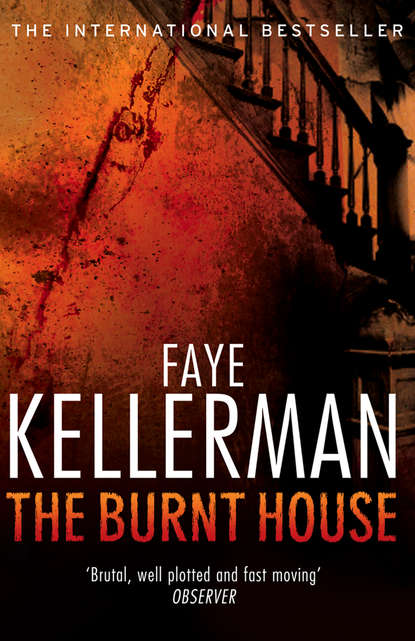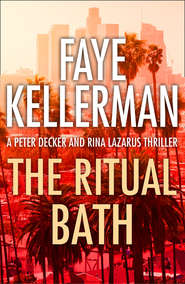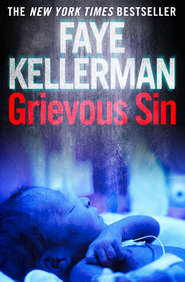По всем вопросам обращайтесь на: info@litportal.ru
(©) 2003-2025.
✖
The Burnt House
Автор
Год написания книги
2019
Настройки чтения
Размер шрифта
Высота строк
Поля
Oliver said, “Well, in L.A., that’ll narrow it down to a few gazillion people.”
“Was she inside the wreckage of the building or was she found in the ground under the building?” Decker inquired.
“You’ll have to ask recovery, but I think there is still quite a bit of foundation left from the building. I can’t imagine why anyone would dig under the foundation and discover a body.”
“If she was found in the wreckage and not under the foundation, her death can’t be any older than the building,” Decker surmised. “So let’s find out when the building went up. Then we’ll go through the missing persons from that time forward. I’d like to send the skull out to a forensic reconstructionist and put a face on the bones.”
“The bones are too delicate. They would break under the impression material needed to make a cast of the skull. Then you would lose any forensic evidence that the original skull might produce.”
“This is a nightmare,” Marge said. “We finally find a missing body, but it isn’t Roseanne. Instead of one possible homicide, we now have two.”
Inwardly, Decker groaned. He hated cold homicides and this one was in deep freeze. But his main concern was dealing with Farley Lodestone. “Is there anything you can do to help us pinpoint a time of murder?”
“From the skeleton, no. But I think we have tremendous good luck in one regard.”
“The clothing!” Marge said.
“Yes, the clothing.” Darwin ate the last fritter and called for the check. “A chunk remained remarkably intact. No label but it seems that Jane Doe was wearing a shirt with lettering on the back. It was preserved because she was buried faceup and the shirt material was synthetic and not as prone to decay. I have it enclosed in a protective plastic bag. We can go back to my office and examine it under a microscope.”
Marta, the tattooed teenager, handed the bill to Darwin, but her eyes were on Decker. “Dessert okay?”
“Delicious.”
“Next time you come here, Germando can fix you up real good. No problem if you’re a vegetarian. We can do somethin’ for you.”
“I’ll keep that in mind.”
“Yeah, we get all kinds of requests nowadays. No this, no that, no this, no that … man, even the cholos are picky. Everyone’s tryin’ to cut down on the fat.”
THE L.A. COUNTY Coroner’s Office was on North Mission Road in the once-notorious Ramparts district, northeast of downtown L.A. The police substation was now squeaky-clean, but though the mark of Cain was fading, it wasn’t entirely gone.
The morgue was two buildings separated by a walkway, offices to the right, the Crypt on the left. A perennial swarm of black flies welcomed the visitor at the front doors. After the detectives signed in and donned protective garb, including shoe covers and face masks, Darwin took them down to the Crypt, the smell in the elevator growing stronger with every inch of descent. No matter how many times Decker had dropped by, it was the stink that always got to him.
The corridor was quiet, the doors of the foyer leading to the glassed-in autopsy rooms and the refrigeration area used for the storage of the bodies. Because of the tremendous glut of corpses, there were cadavers on gurneys in the hallways, most wrapped in plastic sheeting, but others were more visible, skin gray and growing mold.
The pathologist’s office was off the main hallway, set up like a galley-style kitchen with cabinets above and below, and stainless-steel countertops that spilled over with instruments of the trade—microscopes of various intensities along with scales, calipers, scalpels, tweezers, and camera equipment. There were seven jars containing body parts that floated in unnamed scientific liquids, mostly digits being rehydrated for fingerprinting. Darwin’s desk was tucked into a corner and was piled high with papers. The office provided adequate space for one person, but was crowded for four adults.
The activity centered around a microscope, the doctor and the detectives taking turns as they tried to make out details on a sullied piece of cloth. The swatch was roughly a six-inch square, most of it mud-colored. With the aid of the lens, Decker could see individual threads that still carried some of the original pink dye. Darwin reduced the magnification in order to make out the lettering, the clearest section directly in the middle of the fabric. The paint was rapidly flaking off.
Decker peered into the eyepieces. “Takes a little getting used to.”
“Yes, it does,” Darwin agreed. “But you can make out words.”
“I can make out letters.”
“What letters?” Marge took out her notepad.
“V-e-s …” A pause. “It looks like v-e-s-t-o-n.”
Marge wrote it down. “What else?”
“Underneath the v-e-s-t-o-n is d-i-a-n. Underneath that is a-p-o-l and underneath that is …” He let out a short breath. “I think it’s p-e-k …” He peered at the area with intensity. “Everything else is smudgy.”
Darwin said, “Look before the p in the p-e-k. I think there is an o.”
“Yeah … yes, I see it. So it’s o-p-e-k.”
“Opek?” Oliver said. “The oil cartel?”
“That’s o-p-e-c,” Decker told him.
Darwin said, “Look in the upper-left corner. You can also see lettering.”
Decker shifted the protected fabric and found the section that the pathologist was referring to. “Yes, I see it. A-j-o-r.”
“Exactly.”
“Anything else I should be looking for?”
“That’s all I could tell you at this magnification,” Darwin told him. “Perhaps we can scan it into the computer and it can bring up more information.”
“Good idea.” Decker pulled away from the instrument and rolled his shoulders. “Anyone else want to take a look?”
“I’ll take a crack at it,” Oliver said. The group waited in silence as Oliver looked over the fabric. “Yeah … that’s all I can make out as well.” He lifted his eyes from the lens. “Not exactly much to go on. The letters are obviously part of bigger words.”
Marge said, “We have to take the cloth in context.”
“What context?” Oliver asked.
“Well, for starters, what was the shirt used for?” Marge examined the fabric. “Because of the printing on it, I’d say that the garment was originally a T-shirt, a sweatshirt, or a jacket.”
Decker added, “Since the material is synthetic, my vote is with a jacket. T’s and sweatshirts are usually cotton.”
“I agree,” the pathologist said.
Marge continued to peruse the cloth. “There’s a lot of lettering on a single patch, and usually jackets don’t have long messages on the back. And the way the partial words are stacked on top of one another …” She got up from her hunched position. “To me that suggests some kind of list.”
Oliver said, “So what kind of list would be on the back of a jacket?”
Decker’s brain fired up. “Margie, let me see your notes for a second.” After reading her pad, he hit the paper with the back of his hand. “It’s like doing a gridless crossword without any clues. Still, if you do enough crosswords, your mind fills in the blanks. V-e-s-t-o-n. If I say it instead of spell it, it helps. Veston. How about the city, Galveston. For o-p-e-k, how about Topeka. D-i-a-n could be lots of things, but if we’re in that part of the country, I’d say Indianapolis.”
“Maybe that’s the a-p-o-l,” Marge suggested.
Decker said, “In any case, I think we’re looking at a tour jacket.”
“Sweet,” Marge said. “Unfortunately, we don’t know whose tour jacket. But we know that it was once pink. I’m betting it’s a girl group, a group with a girl as its lead singer or a solo girl.”
“Madonna?” Darwin said. “She was really popular.”











